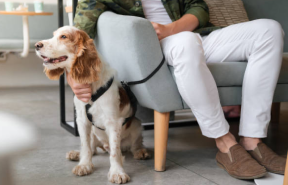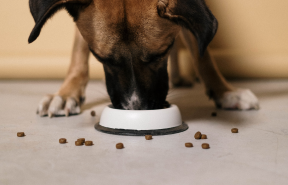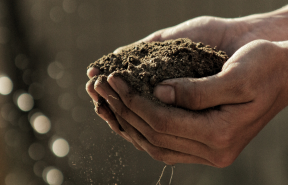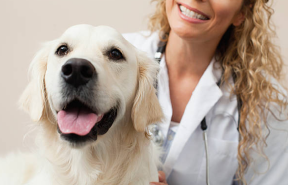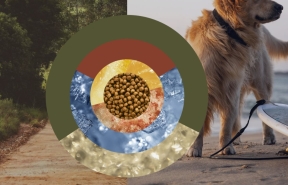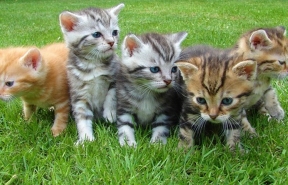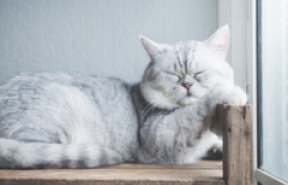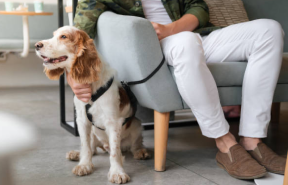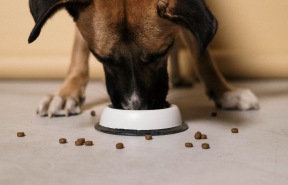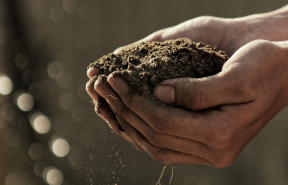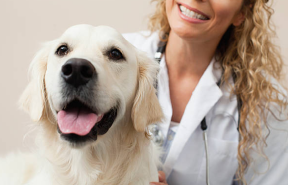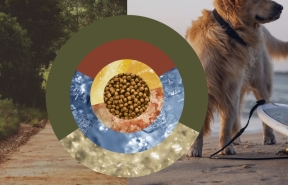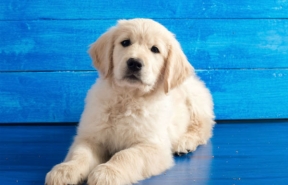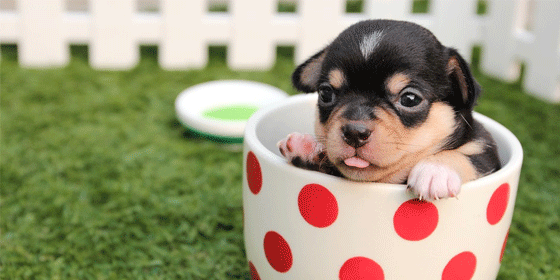House training , puppy bedtime and obedience training are just a few things you should know about before you become a puppy owner.
House training
House training should begin as soon as you bring your puppy home. Choose a private place in the garden that is not a frequent thoroughfare, and take it there:
- First thing in the morning
- After each meal
- After naps
- After leaving it for a short period of time
- Just before you retire for the night
- Anytime it circles, whines or stands anxiously at the door
Never punish your puppy if accidents occur. If your puppy does make the occasional mistake inside, immediately put it outside and offer praise when it gets it right.

Cleaning up after your puppy
To begin with, toilet training can be challenging for your puppies and it will make some mistakes. Sometimes they don't know they've made a mistake unless we communicate to them that we find certain behaviour unacceptable.
One mistake that puppies make, especially during house-training, is to relieve themselves indoors, instead of the appointed place you have chosen for them. When this happens, it's important to clean up your puppy's accident quickly and thoroughly without punishing them.
But the most important part of the training is that it prevents your puppies from forming "scent posts". A scent post is a smell that only your puppy will notice and one that will encourage it to relieve itself whenever it smells it. Your vet, or local pet shop, has products specifically made for cleaning up puppy accidents to neutralise these scent posts.
Puppy Bedtime
Are you having a hard time convincing your puppy that it's time for bed? One trick is to take it for a long walk before bed. This will help your puppy burn off any excess energy and allow it to go to the toilet too.
Establish a firm bedtime, stick to it and try to be consistent about not giving your puppy attention when it is playing up. Telling your playful puppy to 'hush' may seem like a good idea, but your puppy can interpret your message differently and assume that if it is noisy it will be rewarded with attention.
The most important thing is to have their bed in a safe and quiet place in the house. If they feel safe and there isn't too much noise sleeping should be much easier.
Obedience training
Dogs are pack animals by nature and need firm discipline in order to feel secure and understand their place in the 'family pack'. Learning and responding to commands such as sit, drop, stay, heel and come, reinforce the fact that you are the leader and are to be obeyed. Your dog's motivation is to please you, so a positive attitude to training is best. Initially your puppy needs to learn two key words:
- Its name for further training, gaining its attention, and getting it to come when required.
- The word 'No'. Before your puppy comes home, decide which behaviours are unacceptable (eg: jumping up, sitting on furniture, nipping) and correct them at the instant it happens with a loud gruff 'No'. Once the behaviour stops, command the dog to sit or drop and then praise the correct behaviour. Never hit your puppy as a means of discipline.
Many veterinary surgeries offer special puppy pre-school classes to help you with early training and socialisation. You'll learn a lot from these classes, and so will your puppy. Obedience training sessions can start at around 10 weeks of age, but should be no longer than 10-15 minutes per day.
During sessions always have the pup wear its collar and a lightweight leather leash, then remove the leash at the end of the session. At about 18 weeks of age you will need a longer, stronger leash. Find out about your local dog obedience school and enrol your puppy as soon as vaccinations are completed, so you can continue your puppy's training program.
Play and exercise
Puppies that are unoccupied quickly become bored and unleash their frustration through destructive behaviour.
We don't enjoy boredom and neither do our pets which is why regular games and exercise are such an important part of raising a loveable, well behaved dog.
The amount of exercise your puppy needs will vary depending on its age and breed, but most puppies need a minimum of 20 minutes of daily play plus an additional 20 to 30 minutes of exercise each day.
Playing with your puppy strengthens the bond between you and helps make it feel more at ease with people. Try playing catch, fetch, or throwing a ball and experiment with different puppy toys - you'll soon discover what your puppy likes to do.
Try a game of hide and seek, chase each other around or try hiding a few treats around the garden and encourage your puppy to sniff them out!
However, it is probably best to avoid really strenuous exercise that involves twisting or excessive jumping. This is best delayed until your pup's bones and joints have matured.
A leisurely walk of 20 to 30 minutes a day is ideal. Your puppy will love going to new places and can benefit from the new sights and sounds too.
Socialising
Socialising is also important during this phase so be sure to provide a variety of experiences such as riding in a car, bus, or in a lift, and mixing with a variety of people, other dogs, and other animals. This way, your puppies will grow into an agreeable companion as an adult dog.
Socialising involves introducing your puppy to people, other dogs and their environment and teaches them to relate in a positive way to new experiences. Puppyhood is when these experiences, both positive and negative, have the greatest effect on your puppy. By socialising them early, chances are their reaction to situations will be more positive and the effects on their behaviour not so bad.
Puppy pre-schools are also a great way to introduce puppies to other dogs. Ask your vet or local dog training facility about these sessions, but remember to ensure that your puppies have been vaccinated before it mixes with any new dogs.
Travelling with your puppy
Many families like to take their pets with them on outings or holidays. It is important that your new puppy enjoys travel, and learns that there are certain restrictions required for the safety of people and pets. All animals should be restrained when travelling in cars.
In large cars, a safety barrier between the passenger area and the rear luggage compartment is ideal for transporting larger dogs. Small dogs should be placed in a sturdy travel cage with plenty of newspaper on the bottom and a small water container attached to it.
NEVER leave a dog in a closed, stationary car - even in cool weather the interior of a car can be extremely hot!
Once at your destination, it is preferable to keep your pet in enclosed surroundings as it may get caught up in territorial fights with other dogs, or try to wander home again.
Effective communication
Pack animals, including your puppies, are skilled at reading the signals of others. It is through this communication that your puppies get to know you. You may be surprised at what you are unintentionally communicating to your puppy through your posture, eye contact and tone of voice.
For example, timid puppies will feel more comfortable with a person who is sitting down and may approach the seated person, but back away from someone standing.
To approach your puppy in a friendly manner, crouch so you are closer to your puppy's height. This non-aggressive approach is very important, especially at a first meeting.
The more you understand how to communicate effectively with your puppy the stronger your bond will be.
One pattern of behaviour that's characteristic of dogs and familiar to almost everyone is tail wagging. Most people recognize that loose, free tail wagging indicates pleasure and a general friendliness, while exaggerated tail wagging, that extends to the entire rump, is often exhibited by subordinate puppies.
The tail, however, is also an indicator of other emotions. A tail waved slowly and stiffly, in line with the back, expresses anger, but clamped low over the pup's hindquarters is a sign that it is afraid. Anxious or nervous puppies may stiffly wag their drooping tails as a sign of appeasement.
The facial expressions of your puppy will also tell you a lot about its mood - whether it's anxious or excited, frightened or playful or any one of a vast range of emotions it may express.
Its ears prick up when it's alert or listening intently, but are held back or flattened on to the head when expressing pleasure, submission or fear. To read its mood correctly, you must watch for other body signals at the same time.
The narrowing or half-closure of the eyes indicates either pleasure or submission, but when its eyes are wide open it intends to be aggressive.
Some puppies will indicate its desire to play, raising a front paw, or by performing the play bow which is often accompanied by barking to attract attention. Other gestures include offering a play object or bounding up to another dog to invite chase.
Puppy Identification
Unfortunately some dogs do get lost. You can help to prevent this by making sure your dog always wears a collar with an identifying name and telephone number, and a registration tag. For permanent identification, ask your vet to implant a microchip. If your dog is lost, contact your local pound, council, RSPCA and veterinary clinics, as lost or injured animals are often brought to these centres.
